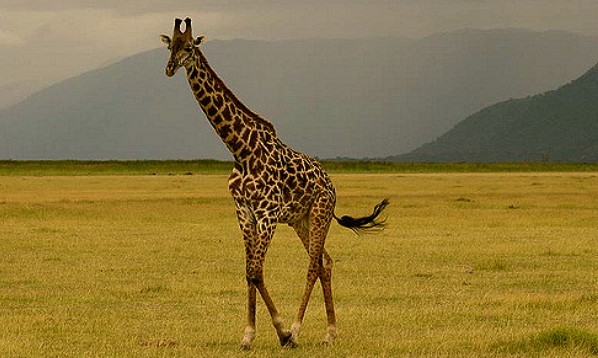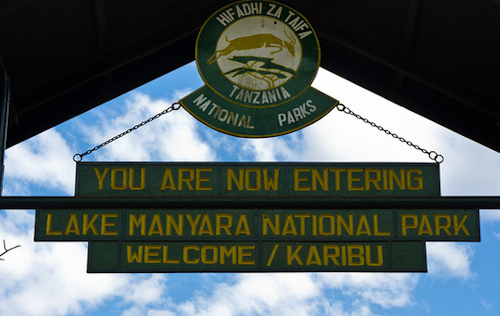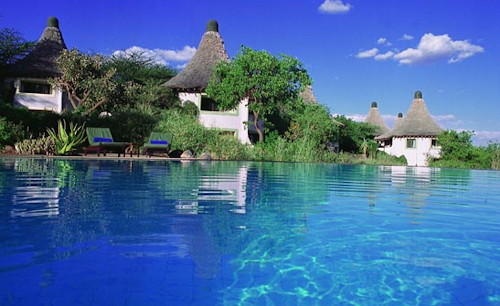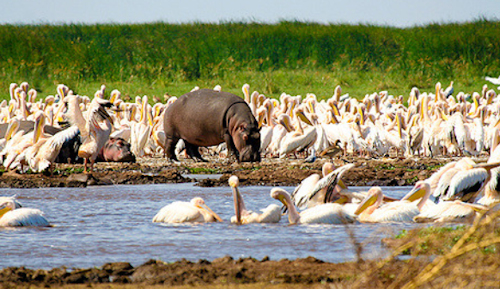Lake Manyara National Park well known for the tree climbing lions, the soda ash lake and its flamingos, we are talking about breathtaking scenery! This travel guide offers you the most updated information about the attractions, lodges, getting there and so much more. Enjoy your safari in Tanzania!
TOP SAFARI PACKAGES PROVIDED BY CREDIBLE TOUR OPERATORS

Lake Manyara has a big number of elephants, so many giraffes; zebras, wildebeest, impala, waterbuck, and warthog, small known shy Kik’s dik dik as well as Klipspringer along the ramps of the escarpment. Leopards are hosted within the broken forests and escarpment, healthy lions that are widely known for their tree climbing pranks. This used to be a special character of the park which is not the case today. Regarded as Africa’s largest, huge herds of baboons are expected by most of the travelers.

Attractions in Lake Manyara National ParkLocated in the northern part of Tanzania, Lake Manyara National Park is 126 kilometers west of Arusha Town. The park is sized 330 square kilometers of which 220 sq kilometersRead More

Getting To Manyara National ParkAs part of the famous northern safari circuit, Lake Manyara National park can only be visited by very few people in isolation. Majority of the safaris to this particular circuit,Read More

When to Visit Lake Manyara National ParkAt the base of the River valley Escarpment is a small park, Lake Manyara National Park. Unlike the more Savanna dominated parks, its ground water forests give you superior changeRead More

Tanzania Safari CompaniesLake Manyara National Park is one of Africa’s alkaline water lakes located in the northern side of Tanzania, approximately ninety minutes drive from Arusha town on a newly tarmac-surfaced road.Read More

Lake Manyara Hotels & LodgesLake Manyara National Park Accommodation Tanzania. Read More

African Safari BlogOur African blog about Lake Manyara, Tanzania safari information and news updates.Read More
Tanzania Safari Experience in Manyara
Within a short period of time, many people want to go for Tanzania safaris as many areas as possible and hurriedly .Therefore most of them that visit the Manyara National Park make it as they make their way from or to the Crater usually in half a day since they do not even spend a night.
Amidst saving on money, this compromises on the time you would have spent only making it convenient to make visits to the northern quarter of the park which is usually very busy. Disappointment may sometimes come out of this because of the hurried experience during your visit to Lake Manyara.

Alternatively, while on your visit to Lake Manyara National Park; it is usually best to reside either inside the park at a permanent camp or opt for a mobile tent. It is a perfect way to adventure the park, but rather expensive. You begin your safari much earlier than all the others and even giving you an in-depth exploration into the park unlike the day visitors. You will definitely enjoy the best wildlife experience if you stay inside the park.
The other Tanzania safari option is to stay outside but near to the park gate. You can adventure the whole park by entering from here early in the morning. Along the Rift Valley escarpment you will also be able to get some affordable and low cost accommodation and offering you great views down across the park.
Birdwatching in Manyara
Birds have a varying life experience within this park. Flocks of pelicans and pink shading of distant flamingos are usually spotted in the middle of the lake. While the spoonbills, egrets, herons, stalks and other waders converge around the edges and water meadows. The captivating species will be viewed in the evergreen forests. The woodlands yield a lot. Examples here include, crowned eagles, created guinea fowl, and the noisy silvery cheeked hornbills.

Park Entrance and Access
In only 1 hour and 30 minutes you are able to reach Lake Manyara National Park by road from Arusha and in less than an hour still, if you are coming from the Ngorongoro crater. Bits of the northern part of the park get very busy more so in the afternoon. You are advised to stay within the park or just nearby it for two nights for you to enjoy viewing it to its fullest. You then enter the park for a complete day safari.
Two main gates, that is in the north and the south make up the 2 main entrances to Lake Manyara National Park. The northern gate has a number of accommodations located along it hence making it very busy as most of the visitors opt to use the northern part of the park. As you move towards the far south, the gate is rarely used as it usually has controlled access. Just a few lodges and camps are permitted to use this gate.
Behind the splendid scenery of the Great Rift Valley’s steep escarpment in the west is the narrow area that safeguards the area between the escarpment and Lake Manyara. The silvery bowls of salt deposits facilitate the ability of the alkaline Lake Manyara to expand contract with the seasons. Grassy floodplains neighbor it so closely while bands of mixed acacia woodlands in the far end. There are also patches of ever green forests next to the escarpment. These are kept going by the perennial underground waters coming from the bottom of the escarpment.
